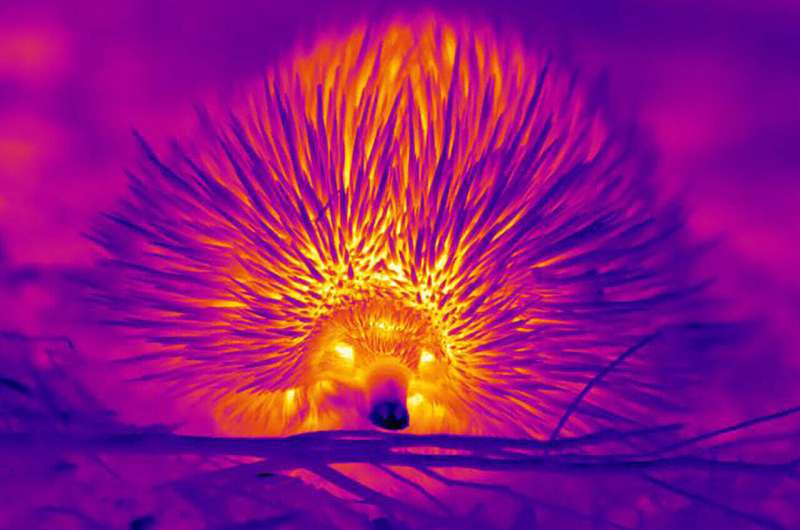This article has been reviewed according to Science X's editorial process and policies. Editors have highlighted the following attributes while ensuring the content's credibility:
fact-checked
peer-reviewed publication
trusted source
proofread
Study finds blowing bubbles are among echidna's tricks to beat the heat

Curtin University research into how echidnas might respond to a warming climate has found clever techniques used by the animal to cope with heat, including blowing bubbles to wet its nose tip, with the moisture then evaporating and cooling its blood.
Lead author Dr. Christine Cooper, from Curtin's School of Molecular and Life Sciences, said thermal vision of wild, short-beaked echidnas in bushland—about 170km southwest of Perth—was recorded and studied to show how the animals exchanged heat with their environment.
"We observed a number of fascinating methods used by echidnas to manage heat and which allow the animal to be active at much higher temperatures than previously thought," Dr. Cooper said.
"Echidnas blow bubbles from their nose, which burst over the nose tip and wet it. As the moisture evaporates it cools their blood, meaning their nose tip works as an evaporative window."
"We also found their spines provide flexible insulation to retain body heat, and they can lose heat from the spineless areas on their underside and legs, meaning these areas work as thermal windows that allow heat exchange."
"Echidnas can't pant, sweat or lick to lose heat, so they could be impacted by increasing temperature and our work shows alternative ways that echidnas can lose heat, explaining how they can be active under hotter conditions than previously thought."
Dr. Cooper said echidnas were one of only two species of monotreme—mammals that lay eggs—in Australia and understanding their biology was important as it can provide clues about how early mammals may have functioned.
"Understanding the thermal biology of echidnas is also important to predict how they might respond to a warming climate," Dr. Cooper said.
"Our work highlights how technological advances that allow for non-contact study of animal physiology, such as the thermal vision used in this study, can give us a better understanding of the physiological capacity of animals in their natural environment."
The research was published in Biology Letters.
More information: Christine Cooper et al, Postural, pilo-erective and evaporative thermal windows of the short-beaked echidna, Biology Letters (2023). DOI: 10.1098/rsbl.2022.0495
Journal information: Biology Letters
Provided by Curtin University




















